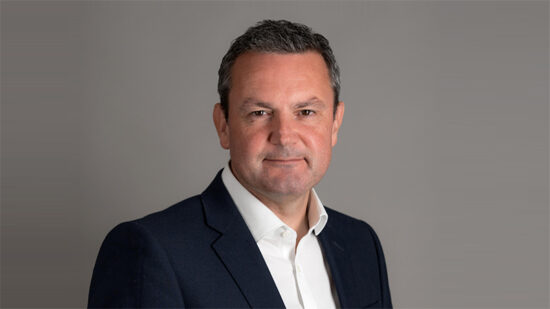The debate on the ‘death’ of 60/40 portfolio continues to loom large in the multi-asset world.
But are reports of its demise premature?
International Adviser spoke with Arbuthnot Latham, Close Brothers Asset Management, Dimensional Fund Advisors, First Sentinel Wealth, SG Kleinwort Hambros, Lawsons Network, Liontrust, Orbis Investments, Parmenion, Royal London and Ruffer for their views on whether the 60/40 portfolio will ever die and if there any other strategies which can work as well as it has done in the past.
They also shared their thoughts on whether 60/40 can supply enough diversification in today’s market and the future of the multi-asset investment world.
Time for a comeback?
Following a bumpy 2022 for the strategy, Eren Osman, managing director of wealth management at Arbuthnot Latham, explains why it could be time for investors to re-embrace the 60/40 portfolio.
“A couple of years ago, bonds were yielding close to, or below zero, while the risk outlook for the asset class was relatively high. At the time, investors should have been looking at alternatives that offered the prospect for increased returns without much additional, or perhaps even less risk,” Osman said. “Such alternative assets would have included hedge funds, infrastructure and commercial property. During this period, our portfolios with 60% equity would have typically held less than 15% in bonds, with the rest in alternatives.
“Following last year’s decimation of the 60/40 portfolio, we would encourage investors to now consider moving back towards this traditional allocation. Our view isn’t predicated on an expectation for rates to move back to zero, but that bonds now present a substantially improved risk/return profile than has been on offer for several years.
“We are further confident that bonds, particularly government securities, will re-establish a negative correlation with equities such that they will provide valuable protection in periods of increased stock-market volatility. Reallocating capital from alternatives should also reduce the underlying costs and is unlikely to compromise diversification at a portfolio level.
“Over the long term, alternatives will likely provide interesting opportunities for investors, but will typically present a higher level of complexity and costs that need to be weighed up against the simplicity of the 60/40 portfolio.”
‘Time for investors to have a re-think and return’
Giles Parkinson, managing director of global funds at Close Brothers Asset Management, said: “Traditional balanced funds had a difficult year in 2022. Equities – the ‘60’ in a customary 60/40 mix – provide the best source of returns. We expect them to go down one year in three while outperforming other asset classes over the long run.
“So, a decline last year wasn’t surprising. The problem last year was in fixed income – the other ‘40’ in the mix – which fell at the same time. A decline is unusual, but what was once-in-a-generation rare was for fixed income to underperform equities, when typically this asset class dampens a drawdown in stocks. Some say 60/40 failed and should be abandoned. We disagree.
“Our analysis is that fixed income disappointed primarily because it wasn’t priced for the risks ahead. In the years after the GFC, central banks pursued ‘ZIRP’ – zero interest-rate policy – which saw yields compress until a third of investment-grade bonds had no yield at all. During the inflationary 1970s era 60/40 still worked because bonds provided a solid income return which cushioned fluctuations in capital values. Today, after the repricing, bonds now come with the best yields in over a decade, so the setup looking ahead is much improved.
“Others have pointed to the positive correlation between bonds and equities exhibited last year as proof that balanced investing cannot perform if this regime holds. But our work suggests that the negative correlation of the last two decades was an aberration and that 60/40 can provide superior risk-adjusted returns even if the correlation between the 60 and the 40 is positive as long as the starting yield on fixed income is high – which it now is. We aren’t banking on a return to negative correlations in our portfolios.
“Many multi-asset investors have responded to ZIRP by looking for returns beyond fixed income in alternative asset classes. This was understandable at the time. But we would question whether a wholesale continuation of this trend is the correct course of action in the current market.
“First, some of these so-called alternatives have proven in hindsight to come with high correlations to either equities or bonds which they are supposed to diversify away from. Second, the current yields available on traditional asset classes – such as around 7% today on investment-grade sterling corporate bonds – now provide a formidable hurdle rate with relatively low volatility.
“We would argue that traditional 60/40 is now back. Bonds may or may not diversify against equities in the near term, but that was never a requirement for 60/40 to work in the first place. Now that yields have moved higher, it’s time for investors to rethink their fixed-income allocations and return to the traditional building blocks of the multi-asset investor.”
Still ‘the king’
There is no question that the 60/40 portfolio has retained its crown, according to Toby Band, managing director of First Sentinel Wealth.
He said: “The 60/40 portfolio remains ‘king’ for balanced investing. This shouldn’t be a debate for 2023; perhaps it was a few years ago, when yields were at rock bottom, but not today when government bonds are yielding 5% and equities generally have a long-term performance greater than inflation. The S&P500’s average return over the last 100 years is 10% gross and 7% net of inflation. So, if you’re getting 5% return from bonds in your portfolio and 7%-10% from the equity component, where is the need to rethink 60/40?
“Perhaps it needs to be prepared for a decade like the 1970s, where inflation whipsawed and real returns on stocks and bonds were substantially muted by inflation of up to 15%. Add in gold or renewables/energy with revenue streams linked to inflation and you protect yourself against this. Gold in the 1970s grew by an outstanding 2,300%, driven up by war, high oil prices and the end of Bretton Woods − the era when USD was backed by gold.
“However, among many investment managers these days, gold is viewed as an unproductive asset which produces no revenue stream, so has no place in a 60/40 portfolio. I believe a small allocation of 5% is sensible. If we experience a decade like the 1970s, you outperform the traditional 60/40 substantially. If we see a repeat of the past 10 years where gold has returned a paltry 1% per annum, your exposure is small, so your underperformance in comparison with a traditional 60/40 portfolio is minimal.”
The 60-40 still rules
Thomas Gehlen, senior market strategist at SG Kleinwort Hambros also believes that the 60/40 is alive and kicking.
“The 60/40 is dead, long live the 60/40,” Gehlen added. “In the decade following the GFC of 2007/2008, ‘TINA’ (there is no alternative) sentiment drove investors away from bonds into riskier asset classes and alternative forms of diversification. The perfect storm of 2022 − roiling markets with surging yields and plunging equity prices − seemed to provide the final nail in the coffin of the traditional strategy, with influential investment managers proclaiming its demise.
“Ironically, the post-pandemic pain has left the strategy more enticing than at any point since the financial crisis. With higher yields, bonds have recouped their traditional benefits of attractive stable income and protective capabilities. The risk of further downside has receded as well – the price impact of yields moving from 5% to 6% is much less severe than that of doubling yields from 1% to 2% and can partly be offset by the higher income collected in the meantime. As a result, this also leaves other diversifiers looking relatively less attractive, particularly non-yielding ones like gold or most hedge funds.
“So, 60/40 is far from dead. Indeed, it has undergone a renaissance of sorts. Nonetheless, financial markets have developed tremendously since the concept of 60/40 was first introduced: access to alternative diversifiers such as precious metals, real assets and alternative strategies such as hedge funds or structured products is much more commonplace and efficient than it used to be. For now, the defensive bucket of the strategy is tilted further towards bonds again. However, the past few years have shown that the value of a broader set of diversifiers is not to be discounted and will remain a key pillar of portfolio construction for years to come.”
‘The 60-40 is not dead’
Jennifer Toon-Davenport, membership and acquisition director at Lawsons Network, believes that the 60/40 still has its place, but she also emphasises that diversification is key.
She said: “The strategy of the 60/40 portfolio, in its basic form, has been criticised because bonds failed to act as a diversifier against falling equities in 2022, when interest rates shot up. This is unsurprising, since both stocks and bonds have cash as a benchmark for whatever yield they return.
“While the same could be said of almost any asset class, bonds’ vulnerability to inflationary shocks, and resulting central-bank tightening, is evident. The merits of bonds in a balanced portfolio is not really in question here but, rather, their correlation with equities.
“Comparing the performance of 60/40 portfolios with previous cycles is unhelpful, since the period of near-zero interest rates following the global financial crisis of 2008, which underpinned both stock and bond performance, was unprecedented. Even comparisons with the success of 60/40 during the robust economic growth in the 1980s and 90s, when stocks and bonds were correlated, forces us to take a view about the likelihood of another prolonged bull market. It also misses the point about what we mean by diversification.
“Other asset classes have a better track record as diversifiers. Gold and other commodities are good examples, as are inflation-linked investments. However, these are not big asset classes compared to the stock market and the correlations are not directly inverse related – few are.
“For size, liquidity and diversification, alternative investments would have been better suited to the 40% component in a 60/40 portfolio. Hedge funds and absolute return funds may appeal more to retail investors where a greater emphasis on wealth preservation is necessary in all market conditions. A wider range of assets, such as commodities, currencies and private equity can also be held in this category.
“The 60/40 is not dead. But the future depends on accepting the merits of the 60% in equities whilst recognising that other asset classes must be considered to diversify the 40% which cannot be met by bonds alone.”
‘Not enough to deal with the shocks’
Ryan Medlock, senior investment development manager at Royal London also highlights the importance of diversification.
“There’s no doubt that multi-asset solutions offering broad diversification across different investment types and geographical regions are a good thing,” Medlock said. “They can help generate returns and provide resilience through a variety of market conditions, and, quite rightly, their popularity shows no sign of waning. But when thinking about diversification, there will be some that argue that the typical 60/40 portfolio isn’t enough to deal with the broad range of market and inflationary shocks we have seen recently.
“The best sources of return will inevitably change over time, so it is essential that multi-asset solutions continue to evolve in terms of the assets and regions they consider. This not only meets the challenge of differing investment environments but also enables better investment opportunity.
“Diversification beyond equities and bonds is key because the future is uncertain, and investors need enough resilience to be confident that their portfolio will perform for them in a range of different market conditions.”
‘Alive and well, but not for everyone’
Mamdouh Medhat, senior researcher and vice president at Dimensional Fund Advisors, says that while the 60/40 still has its merits, it may not be suitable for all.
“The demise of the 60/40 allocation has been predicted for decades” Medhat said. “30-plus years ago, it was the default allocation for UK pension funds wanting moderate growth at moderate risk. That was in the days when pension funds measured their performance against each other, rather than against progress towards their long-term goals. A lot has changed since then, and investors of all types have become more sophisticated in setting their goals and determining their asset allocation.
“The value of transparency and simplicity is often understated, and while a 60/40 allocation may not be perfect, many long-term investors could certainly do worse. If the 60% is a low-cost, diversified portfolio of global equities, and the 40% is a collection of short-term, high-quality global bonds, a disciplined, long-term investor has every right to expect some growth without too much volatility. That might be right for some people, while 40/60, 80/20 or 100/0 is more appropriate for others.
“In any case, beginning with the stock/bond mix is putting the cart before the horse. A sensible approach to investing is to be upfront and precise about your end goal and work backwards from there. A mix of stocks and bonds works well for many, but not all.
“For example, if your goal is a certain stream of income beginning at a given future date, risk is probably better thought of as the volatility of that future income stream rather than the likelihood of losses while you are accumulating to earn that income. In that case, an asset allocation that locks in the future income level, such as an annuity or other guaranteed products, may be more appropriate than anything else.
“Not all 60/40 allocations are created equal. And not all investors will find 60/40 right for them. But the idea of having a sensible mix of stocks and bonds to achieve long-term investment goals is alive and well, as it has always been.”
Jasmine Yeo, investment manager at Ruffer, also says that the world has changed, and while 60/40 may retain its role as a simple solution, its performance is less dependable than before.”
“The past 50 years, a period characterised by falling interest rates, low inflation and low volatility, was a superb environment for both bonds and equities,” Yeo added. “Today the world looks very different, and our view is that from a political, economic and market perspective, the relatively benign and stable world that we lived in pre Covid is not coming back.
“As a result, what is clear to us is that no one asset, nor single strategy can guarantee success in this new environment; buy and hold is unlikely to be effective. Instead, investors will require a diverse toolkit, that is flexible, adaptable and robust, to deliver consistent, positive returns in a more inflation-prone, volatile era.
“Investors too will need to look at a wider investment universe. Commodities, a beneficiary of higher global economic activity and inflation, where valuations are attractive; gold, typically offering protection against rising inflation; and inflation-linked bonds, a natural bolthole for investors in a period of financial repression (the main driver of the asset class being the gap between inflation and bond yields) should all be on the menu. So should unconventional protections − derivative instruments which provide uncorrelated returns.”
‘Moments that can scorch the 60/40’
Yeo said: “As long as financial markets are complex, investors will seek simple solutions. So, I don’t think 60/40 will ever die. But it’s unlikely to be as failsafe a performer as in the past. In a new investment regime of higher and more volatile inflation, asset-class correlations will become less stable. There will be times when bonds assert a negative correlation to equities and therefore protect, during periods of disinflation, but other moments when that correlation flips positive, due to inflationary impulses such as those of 2022. These are the moments that can ‘scorch’ the 60/40.
“The chronic problem remains unresolved − the global economy remains too indebted, and the policy actions over the last few years have not only increased the debt burden, but the cost of servicing is now even greater. In addition, the economic landscape has shifted to deglobalisation, renewed labour-bargaining power and great power conflict. Meanwhile there is simply not the political or popular appetite for the sustained, restrictive monetary policy that would be needed to properly deal with these new inflationary forces. We expect higher nominal interest rates but deeply negative real yields and unstable correlations between asset classes for quite some time to come.
“Bonds will still have a role to play in portfolios, but investors will need to use them more tactically and make appropriate distinctions between nominal and real duration – the latter being the key in a world of negative real yields. Duration – or rate sensitivity − becomes all the more important if rates oscillate as we expect them to.”
“The 60/40 portfolio may bring enough in today’s market, but perhaps not tomorrow’s. The implicit assumption of the 60/40 portfolio is that stocks and bonds are negatively correlated; they move in opposite directions. When stocks go down, central banks have tended to cut interest rates in response. This pushes yields down and bond prices up – thereby ‘balancing’ the portfolio.”
‘Embrace the volatility of equities’
Being patient and disciplined, and thinking long term are key, says James Klempster, deputy head of the Liontrust multi-asset team.
He said: “Last year was one of global volatility and uncertainty and we saw a dramatic sell-off of both equities and bonds, which led some to question whether it sounded the death knell for the 60/40 approach to investment or multi-asset investing more generally. Historically, a balanced portfolio has largely reaped rewards by ensuring investors are hedged against excesses in either asset class, but 2022 was clearly a painful one for investors.
“Last year also saw an inflationary price shock accompanied by an exceptional set of macroeconomic headwinds, not least the geopolitical crisis of war in Ukraine, weather patterns affecting harvests and a political crisis in the UK (three prime ministers and four chancellors within a short space of time). Central banks were busy fighting inflation by pushing up interest rates sharply.
“Following 2022’s market repricing, 2023 has already seen a sharp pickup and we believe that there are plenty of asset classes offering investors attractive yields – from pockets of the equity market to the lower-quality reaches of the fixed-income markets.
“When you’re thinking about balanced portfolios, your main driver of growth is equities and you have to think about equities for the long term – you not only have to harness their power of compounding, but you also have to embrace the volatility that comes with equities. The equity in the portfolio can be thought of as the engine room which will drive real returns over the long run.
“We believe the fixed-income section should provide the diversification and the proportion used will depend on tolerance for risk. We don’t subscribe to the notion that government bonds have lost their ability to diversify – there have only been a handful of years in the last hundred or so that have seen equities and bonds sell off, so building a strategy around that would not seem like a sensible one.
“With yields back in and around the 4% level for sovereign debt, we wouldn’t say we were bullish about the scope for outright capital gains from government bonds but the running yield, plus the ability to rise if rates fall, mean that they could potentially have far greater value from a diversification or portfolio construction perspective than they have had for many a year.
“We believe the future is much brighter, in that we should be able to see above-trend returns. However, investors should expect to see periods of outperformance and periods of underperformance.
“Markets have repriced and the majority of both equities and bonds are cheaper than they were last year. Long-term history, through a variety of different investment backdrops, economic environments and disparate geopolitical environments suggests that patient, long-term, disciplined multi-asset investment will generate attractive results. Claims of the death of the 60/40 approach may be premature.”
The end of a golden age
Rob Perrone, investment counsellor at Orbis Investments, said: “The last few decades were a golden age for a 60/40 fund/strategy. That golden age is not likely to repeat. You simply couldn’t dream up a better environment for the 60/40 than the last 20 years. Globalisation, lean supply chains and waning labour power all kept inflation low and profits high, boosting the returns of bonds and stocks. Now we face deglobalisation, redundant supply chains, rising labour power and an expensive transition to a cleaner energy system—all of which point to unpredictable inflation and unreliable returns from bonds and stocks.
“The poor returns for the 60/40 in 2022 didn’t surprise us. We had been sounding that alarm for years, and I wrote a eulogy for the 60/40 in 2021. In shouting about the risks to the 60/40, we were early, and often lonely. As contrarians, we’re used to being early and lonely. If it wasn’t uncomfortable, it wouldn’t be profitable.
“The 60/40 is the perfect strategy for a world without stagflation. Unfortunately, we’re heading into a world where stagflation may become a regular feature. When growth is low but inflation persists, stocks and bonds can suffer at the same time. Portfolios may struggle without exposure to real assets like resource stocks, infrastructure companies, inflation-linked bonds or gold. Risks could also be worse. While stocks and bonds reliably balanced each other over the last 20 years, they rose and fell together through most of the 20th century.
“The future for multi-asset portfolios is likely to be more difficult and more active than the past. The last 20 years were ‘easy mode’ for investors. All you had to do was take broad exposure to stock and bond markets, and you got a great return. In future, active security selection is likely to be far more important. Fortunately for active investors, valuations within stock markets are all over the place. Some US tech giants are so richly valued that they need to deliver outrageous growth just to justify their current prices. Many smaller companies in Japan and the UK are so cheaply valued that any crumb of good news would come as a rewarding surprise. It is a thrilling time to be hunting among value stocks.
“Investors who allocate across funds should take a deep look into what they own. By choice or by market momentum, many investors have ended up with huge concentrations in the winners of the last decade. Those aren’t likely to be the winners of the next decade. Investors should urgently seek out funds that behave differently from passive funds and peer groups. We believe it’s an unusually important time to have exposure to contrarian strategies.”
‘All the rage but an overreaction’
Jasper Thornton-Boelman, investment director at Parmenion sums up the debate as “an overreaction”.
“Writing off the 60/40 portfolio was all the rage in 2022, but undoubtedly an overreaction,” he said. “A single year of poor returns doesn’t herald a new era for multi-asset investing.
“Current yields provide a great income return for bond holders and, importantly, should be uncorrelated to equities at points of stress.
“That’s not to say diversification can’t be enhanced further with other assets added into the mix, but whether it is 60/40, 50/50 or 40/60, looking ahead, long-term returns ought to be pretty healthy, with both equities and bonds pulling their weight.”








